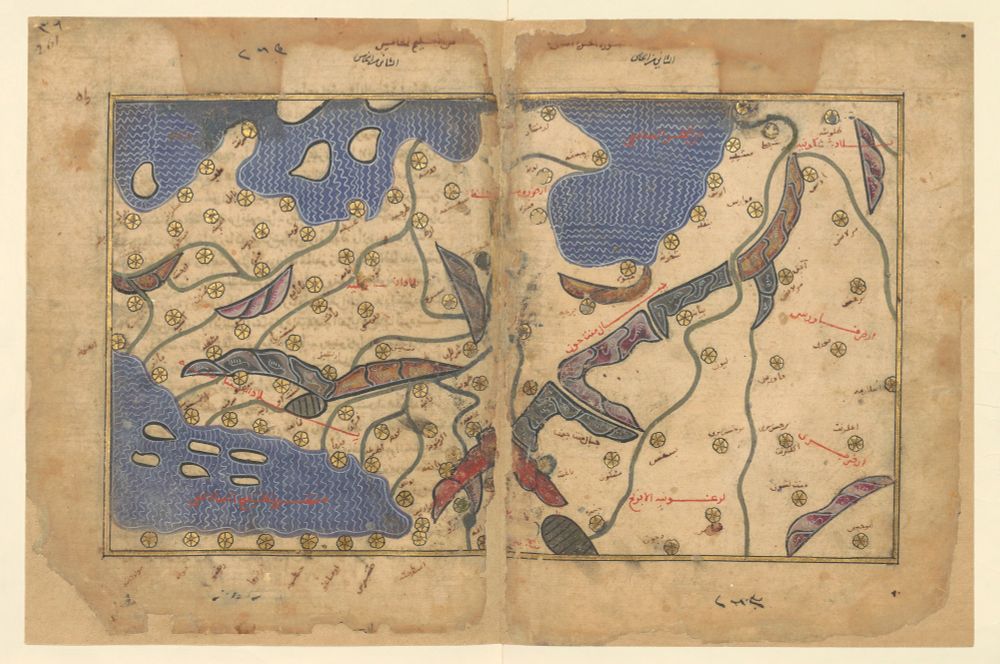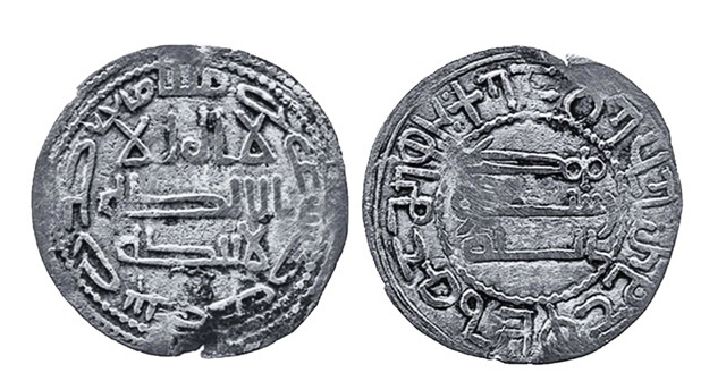

Share & follow because 2025 is going to bring more!

Join us in exploring a phrase from Ibn Saʿīd al-Maghribī’s 13th-c. geography. He refers to the Damādim of northeast Africa as “Tatars of the Sūdān.” Hannah Barker interrogates the racializing discourses at play in such comparative claims.
[image: British Library Or 1524]

Join us in exploring a phrase from Ibn Saʿīd al-Maghribī’s 13th-c. geography. He refers to the Damādim of northeast Africa as “Tatars of the Sūdān.” Hannah Barker interrogates the racializing discourses at play in such comparative claims.
[image: British Library Or 1524]
The exploits of the ʿudhrī lovers Jamīl and Buthayna are well known, full of potential for romance and scandal and violence. This article asks how such celebrated stories read differently when read with an eye to Buthayna’s experiences instead of Jamīl’s performances

The exploits of the ʿudhrī lovers Jamīl and Buthayna are well known, full of potential for romance and scandal and violence. This article asks how such celebrated stories read differently when read with an eye to Buthayna’s experiences instead of Jamīl’s performances
How can we rethink word stress in Classical Arabic? This article looks to an unexpected source: the traditional recitation of metra in Persian metrics. This evidence clarifies controversial patterning in Classical Arabic, with implications for Proto-Arabic word stress, as well
How can we rethink word stress in Classical Arabic? This article looks to an unexpected source: the traditional recitation of metra in Persian metrics. This evidence clarifies controversial patterning in Classical Arabic, with implications for Proto-Arabic word stress, as well

Explore the history of 15th-century Diyarbakır with us today! This new article relies on literary & epigraphic sources to tell a story of Aqquyunlu rulers & their relationship to the famous Armenian bishop, painter, & poet Mkrtičʻ Nałaš
[shown here: remains at nearby Ergani]

Explore the history of 15th-century Diyarbakır with us today! This new article relies on literary & epigraphic sources to tell a story of Aqquyunlu rulers & their relationship to the famous Armenian bishop, painter, & poet Mkrtičʻ Nałaš
[shown here: remains at nearby Ergani]
We invite you to explore a text composed in the northern reaches of the Caliphate in 744: the Armenian martyrology of Vahan of Gołtʻn. This article includes a translation and intro that analyzes the text’s construction of the Umayyad world and Armenian experiences within it

We invite you to explore a text composed in the northern reaches of the Caliphate in 744: the Armenian martyrology of Vahan of Gołtʻn. This article includes a translation and intro that analyzes the text’s construction of the Umayyad world and Armenian experiences within it
Ibn Khaldūn’s Muqaddima offers the most extended reading of a series of maps known from medieval literature. In this article, Alfred Hiatt parses Ibn Khaldūn’s text alongside manuscripts of al-Idrīsī’s 12th-cent. geography, prompting questions about Ibn Khaldūn’s art of history

Ibn Khaldūn’s Muqaddima offers the most extended reading of a series of maps known from medieval literature. In this article, Alfred Hiatt parses Ibn Khaldūn’s text alongside manuscripts of al-Idrīsī’s 12th-cent. geography, prompting questions about Ibn Khaldūn’s art of history
Share & follow because 2025 is going to bring more!

Share & follow because 2025 is going to bring more!
This example combines familiar format: “there is no god but God alone, who has no associate; Muhammad is the messenger of God” in Arabic, w/ Georgian margin “Christ, exalt Bagrat, king of the Apʻxaz”

This example combines familiar format: “there is no god but God alone, who has no associate; Muhammad is the messenger of God” in Arabic, w/ Georgian margin “Christ, exalt Bagrat, king of the Apʻxaz”

🧵⬇️
🧵⬇️
10th-c. traveler Ibn Faḍlān describes non-Muslim Rūs: “When the chieftain dies, the members of his household ask his jawārī and ghilmān, ‘Who will die with him?’ One answers, ‘I will.’”
Arabic texts suggest most funerary sacrifices among the Rūs were women

10th-c. traveler Ibn Faḍlān describes non-Muslim Rūs: “When the chieftain dies, the members of his household ask his jawārī and ghilmān, ‘Who will die with him?’ One answers, ‘I will.’”
Arabic texts suggest most funerary sacrifices among the Rūs were women


